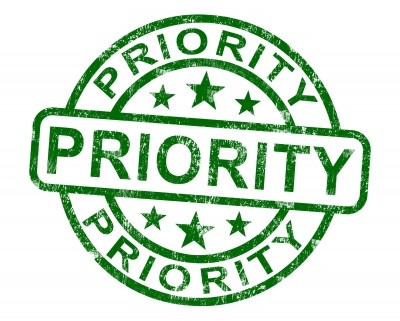Business Priorities: Do Less, Not More
“Less is more,” the architect Ludwig Mies van der Rohe liked to say. Can that be true in business? When we focus on fewer business priorities, do we get more of the right stuff done? And does it mean more success, more business growth, not less?
I recently read an interesting Harvard Business Review post about The Power of Subtraction by Anthony K. Tjan. It got me thinking. What would happen if we eliminate a third of what we do in a day, and just focus on the three most critical success priorities for business growth?
How many times do you fire up the computer, check your to-do list, and experience Big Overwhelm? Nobody’s immune. But no one is more susceptible to that sinking feeling more than creative, hard-driven entrepreneurs and business owners. At least that’s what I hear from Ariad Partner’s talented clients.
Using Subtraction on Business Priorities
Author Anthony K. Tjan got the idea of subtraction as a strategy from his friend Richard Saul Wurman, the founder of the TED conferences. In a recent conversation, they discussed the power of subtraction as it applies to innovation.
By removing things one creates self-imposed constraints, but also clarity and a cleaner context for inspired innovation.
What sticks with me most about the conversation is the simple pragmatism and prescriptive nature of the word itself — subtraction. How much more direct can you get than to say you need to subtract something? In business, we often dance around the subject by using MBA-speak like “focus,” “alignment,” or “prioritization.” These words imply the need to edit, clarify, and rethink, but aren’t as direct as asking someone to subtract.”
I like the directness of subtracting too. Here’s what Tjan says about applying subtraction to priorities:
Subtract Your Priorities. In an earlier post I described the critical CEO best practice of writing an annual letter to the board outlining one’s top priorities. When CEO priorities are codified, it provides a recurring reference source for the board and employees. Intellectual honesty around such a document enhances self-awareness and avoids priority drift and the “shiny ball syndrome” from which many of us as founders or CEOs suffer.
For this practice to be effective, there can be no more than five priorities at any point in time. Most CEOs, though, gravitate toward ten top priorities, maybe even more. Subtract your way down to the top five — or, even better, the top three. And avoid cheating by “bucketing” ten things into five categories! Each priority needs to be distinct and mutually exclusive.
Here’s a suggestion: try it. Identify your three most critical business priorities. Reduce your focus to the three most essential priorities for your business growth. Of course, you can delegate the things you eliminate, because they also need attention. But for the next few days, try doing less. But do a better job. Go deeper into completion on the things that truly matter.
You might surprise yourself. And if you can’t decide which things to do more of, and which to do less of, consider having a conversation with me. I can probably help. Here’s how to talk with me.
(Image: Freedigitalphotos.net)








